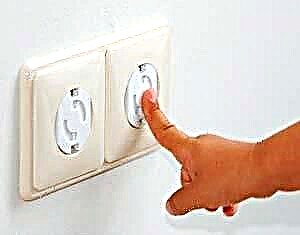Are you waiting for the first teeth to appear? Does the child have painful teeth cutting? How to relieve pain and relieve a child's condition - 5 effective tips and video consultations from specialists, plus the personal experience of mothers.
How parents are waiting for the first tooth to appear! This is a definite step in the development of a crumb. However, you should be prepared for the fact that a few weeks before the first tooth appears from the gum, the baby's behavior changes greatly. The toddler is capricious, crying, becomes restless, his day and night sleep is disturbed, his appetite decreases, and the child pulls everything that can and cannot be in his mouth, while drooling appears, and the gums swell. How can you help your baby relieve this condition? There are several ways that really "work" and relieve the painful condition.

Method number 1. Massage the gums
The massage not only relieves itching of the gums, improves blood circulation, helps faster teething, but also distracts the baby from painful sensations. It is not for nothing that the child pulls everything into his mouth and at the same time presses with his fist on the gum area where a tooth is expected to appear. That is why mommy should learn some simple gum massage techniques.
You need to massage the gum crumbs with your finger. First, you need to thoroughly wash your hands and treat them with an antiseptic so that no infection gets into the child's mouth. Massage the gums in a circular motion from the front, back, and sides for 30 to 40 seconds. You can repeat the massage 5 to 7 times throughout the day.
You can also use special silicone finger tips. They have a delicate effect on the gums and stimulate them well. With the help of attachments, you can massage even the gum area where molars are expected to appear.

Method number 2. Teethers for teeth
Teethers, like massage, promote faster teething and improve blood flow to the gums. There are many types of teethers on the market, which differ in shape and material of manufacture. Manufacturers offer products made from latex, silicone, thermoplastic rubber, plastic and even wood.
How not to get confused in the assortment and choose the right product to facilitate teething so that it will bring maximum benefit to the baby? Latex teethers are considered the most convenient. However, they have their own “minus” - they wear out quickly and have to be changed every month. Silicone products are much more practical, but they are more rigid. There are teethers filled with water or special gel. It is advisable to cool them before use.

The shape of the teether is also important. Choose anatomical so as not to harm the formation of the correct bite. Also, the size of the product should correspond to the age of the toddler, it should be neither large nor small.
There are even battery-operated teethers on the market. When such a model is turned on, the product begins to vibrate, massaging the painful gum area.
Also in stores you can find special “mittens” for teething

Method number 3. Folk remedies
- If your child is not allergic to honey, you can lubricate the gums with this product. Then rub a small amount into the painful area. To calm down, additionally give 1 tsp before bedtime. honey.
- A solution of soda (tsp for 200 ml of water) can also help teething: they lubricate the gums with it, or use it to wet the massage napkins.
- Massage the gums of babies with a piece of soft cloth moistened with cool water.
- Chamomile has a wide spectrum of action - it soothes, relieves inflammation, relieves pain. Chamomile oil is rubbed into the skin of the cheeks, an infusion is rubbed into the gums.
- Amber beads worn around a child's neck during the day relieve pain and reduce swelling. It's important to remember to take them off at night. Rubbed into a painful place, valerian tincture temporarily anesthetizes, reduces irritability, maximum 5-7 drops per application.
- Soothing tea made from chamomile, lavender, lemon balm.
No less effective and popular are sage, starlet or burdock tinctures for strengthening the gums and relieving pain, chicory root or strawberry, a terry cloth and other folk remedies. Cold vegetables and roots are used with caution. It is safer to replace them with teethers.
Proper nutrition of a child is another therapeutic component in teething: the diet should contain vitamins and calcium.
Method number 4. Medicines
There are two types of medications that make teething easier. The first are designed to relieve pain with an anesthetic, which is part of the product. The latter have anti-inflammatory effects.
If gels with anesthetic are used, it is important not to exceed the dosage (2-3 mm of medication per application), you can use them only after consulting a pediatricianwho is watching the baby.
Anti-inflammatory drugs are also available in the form of gels, they work for a long time, therefore they are used no more than 2 times throughout the day.
They are used for teething and homeopathic remedies. Many mothers note their effective impact. In addition to all these funds, syrups are also used, which act in a complex way, improving the general condition of the toddler.
List of medications:
- Kalgel (and its analogues Kamistad, Dentinox-gel, Dentol)
- Holisal
- Dantinorm
- Dentokind
- Nurofen
- Panadol
- Vibrucol
- Baby Doctor "First Teeth"
- Pansoral "First teeth"
We remind you again: all medications can be used only with the permission of the doctor.
Method number 5. Distracting activities
How else can you help your baby? If necessary, rebuild a little and change your principles. Do you often take your little one in your arms? Imagine, carrying in your arms helps, the baby feels protected, so he calms down. Walk longer in the fresh air, feed not by the clock, but at the request of the child (during this period, children are much more likely to attach themselves to the breast, while refusing to feed them), prepare baths for him with the addition of chamomile (if there is no allergy!). If you use a pacifier, refrigerate it often.
And the last thing - do not interfere with your baby during this period. He "knows" what he is doing. Pulling fists in your mouth? Let be! Do not touch! "Rubs" teeth with a toy - to your health!
Remember: during the period of teething, more attention should be paid to hygiene and cleanliness, since the child's immunity during this period decreases and it is easy to pick up an infection.
Advice to moms: be patient, because teething won't last forever, the first tiny tooth will appear very soon!
- From how many months the first teeth are cut and in what sequence
- Associated problems with teething
Video consultations of specialists and personal experience of mothers
No. 1. Tatiana Prokofieva (Candidate of Medical Sciences, mother of three children)
No. 2. Doctor Komarovsky
No. 3. Svetlana Rost
No. 4. Svetlana Votinova
Tips from moms from forums
- They managed with the wooden sides of the bed ... all five times ... they themselves will find what to tighten in their mouths, what to scratch .. donated pharmacy teethers, including those "on the water" (for cooling) remained intact)
- Our teeth bother, so I smear with kalgel. And in his mouth he always has his hands, then a teether, then a rattle, then a diaper, then a side of a stroller ... ... and, I confess, my mother's finger too.
- The doctor recommended viburcol candles to us, it helped us a lot. And Kalgel gel, like it's the most harmless. They also gnawed everything in a row, saved themselves with large dryers, but so that they did not dissolve and did not gorge themselves, they changed every five minutes.
- Calgel helped us. Or a teether, inside there is water, I cool it in the refrigerator (not in the freezer) and then give it cold out of my hands, it helps a lot, she sucks and bites it and she stops being good at being capricious.



